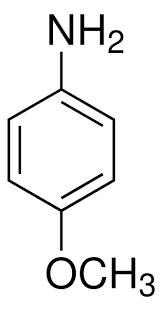Περιγραφή
Quantitative method in fats, oils, bakery products, nuts, dried fruits
Description
Anisidine is a compound produced when fats, oils, bakery products, nuts, dried fruits are deteriorated. Excessive levels of anisidine indicate that the product is no longer fresh and therefore should not be consumed. Anisidine is also responsible for the particular characteristic odour of incompatible for consumption fats and oils. The anisidine value test is used to assess the secondary oxidation of oil, fat, bakery products, nuts, dried fruit, which is mainly attributed to aldehydes and ketones, and can be used as a specific indicator of the oxidation state of the sample.
Contents of packaging
R1 – 1 x 20 mL (use gloves)
R2 – 5 x 18 mL.
Calibrator – with a reference value of 60 AnV
Note: All kit components are stable until the expiry date on the label. Protect them from light and contamination during use. Do not use the reagents after the expiration date. Store the reagents at 2-8°C.
Number of tests: 50 tests
Ref.: 88003
Life time: 12 months from date of manufacture
Preservation & Stability: 2-8°C
Test Principle
Aldehydes, derived from the secondary oxidation of the fatty sample, react with p-anisidine to determine a change in absorbance. The value of anisidine is expressed as AnV (anisidine value) according to the AOCS reference method (Cd 18-90).
Range of measurement – Comparative test
p-Anisidine : 0,5 – 100 AnV
The AnV method of MenidiMedica Biotech Greece showed good
correlation with the official AOCS method Cd 18-90. In addition, the laboratory of the University of West Attica carried out comparative tests between the AnV method of MenidiMedica Biotech Hellas for the determination of p-anisidine in oils and fats and the official AOCS Cd 18-90 method: the correlation coefficient obtained is R2 = 0,9967,
which indicates that the correlation between the two methods is very good.
Note: A standard anisidine value sample from the Food Allergens Reference Laboratory was used.
Sample collection
Oils extracted from nuts, seeds, nuts, solid fats, fish oils, fried oils, bakery products. For the preparation of samples, contact MenidiMedica Biotech Greece or our representatives for the SAMPLE PREPARATION SHEET AnV.
Procedure
Use semimicro glass cuvettes with Light Path 1 cm. (On request)
1. Mix 0.2 mL. sample with 0.8 mL. R2 in semimicro glass cuvette
2. Wear gloves. Add 0.2 mL. R1 to the semimicro glass cuvette from step 1 and mix
3. Incubate for 10 min and measure the sample anisidine value *Note: For blank use 1 mL. R2 + 0.2 mL. R1 and proceed with this in the same way as with your samples. This is your blank.
Sample: Fats, oils, bakery products, nuts, dried fruits
Wavelength: 350 nm
Temperature: 37°C (15-25°C)
Blank: Reagent Blank (R1+R2)
Colour is stable for at least 20 minutes
Warnings
1. Do not use reagent vials of the kit from different batch numbers
2. Allow kit reagents and samples to reach room temperature before use, as cold reagents and/or samples may reduce analytical performance. A 20-30 minute wait at room temperature is recommended.
3. Do not use kit reagents beyond the stated expiration date.
4. It is very important to add the specified amounts of samples and/or reagents very accurately. Otherwise, sensitivity or specificity are not guaranteed. If the amount of sample is less than the recommended amount, the sample may not reach the reaction area and the test will not perform successfully.
5. All used products must be disposed of in accordance with current legislation.
6. Do not dispose of the outer box of the kit until its contents have been fully used. The outer box contains information about the batch of ingredients.
p-Anisidine Value Quantitative method in biological, food, environmental samples IFU ENG PDF


